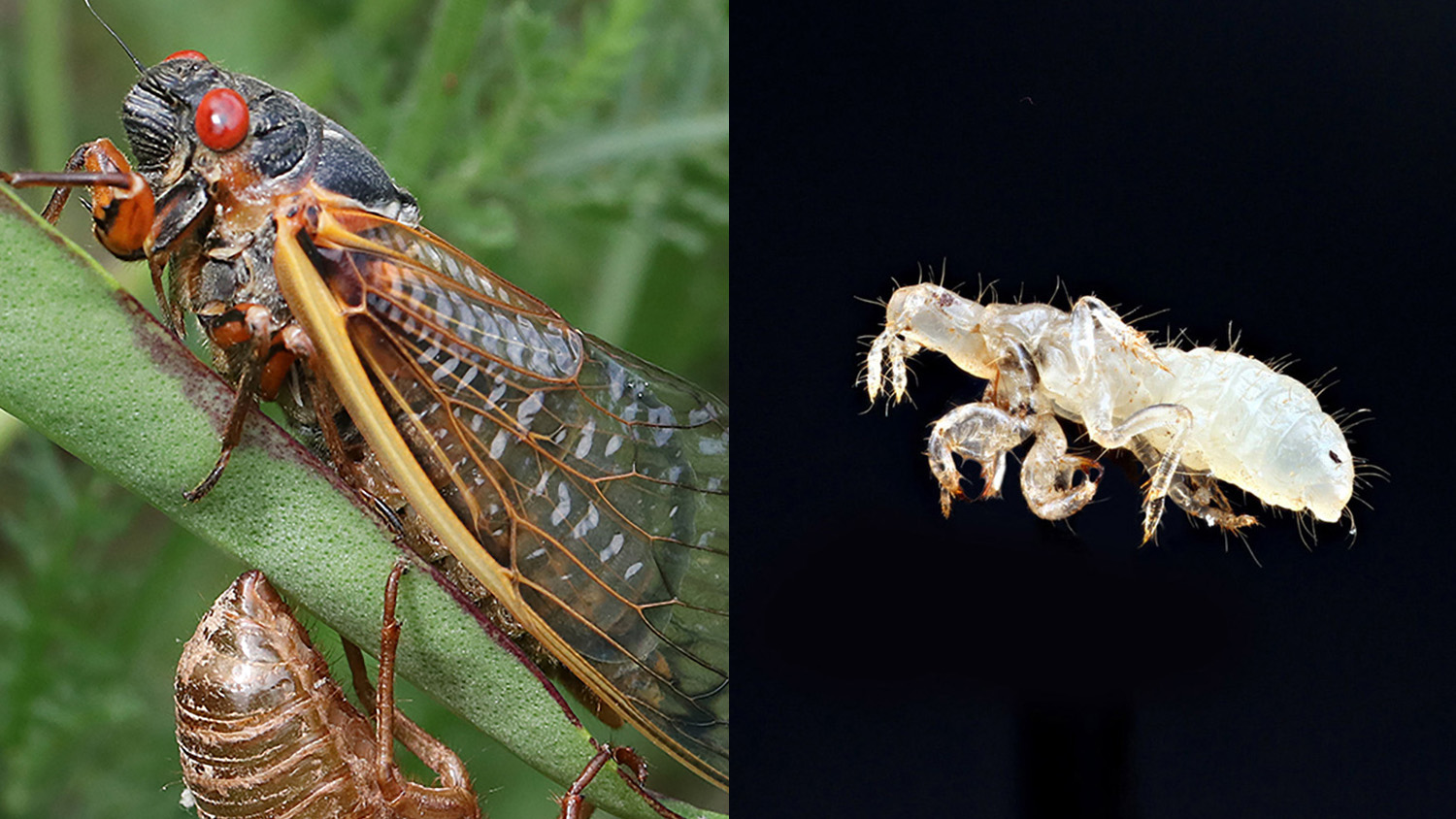The Next Generation of Periodical Cicadas is Coming

They came. They ate. They molted. Now the 13-year periodical cicada brood XIX is nearing the end of its life cycle and the next generation is preparing to start the process anew with a flood of nymphs poised to hatch in central and western North Carolina.
As the noise dies down from this year’s cicada emergence, we caught up with Clyde Sorenson, Alumni Association Distinguished Professor of entomology, to talk about the impact of these orange-eyed insects and their offspring on trees, wildlife and the environment.
What do the nymphs look like and what types of plants/trees do they typically hatch in?
The eggs may be laid in the twigs and stems of a large range of plants, but most end up in the twigs of broadleaf trees like oaks, maples and tulip poplars, among others. They’ll hatch about six weeks after they were laid (so around here, in mid-to-late July).
The nymphs look very much like tiny versions of the shed exoskeletons that were everywhere a few weeks ago when the adults emerged. They are round little beasts with fossorial (digging) forelegs and a tiny piercing-sucking mouth. They are about ⅛-inch long when they hatch.
Are the nymphs considered pests?
The nymphs shouldn’t be regarded as pests. They do feed on the roots of their host trees but it is difficult to detect any significant damage to the trees from this activity. The year before they emerge, when they are the largest, there may be a slight diminishment in the growth of those trees, however.
The oviposition damage (“flagging”) to twigs from feeding cicadas may have a minor effect on fruiting in some trees in the subsequent year. Mast crops of acorns are generally lower the year of an emergence and perhaps the next year, but frequently heavy two years after the emergence.
Are there other impacts from the emergence of cicadas and nymphs?
One interesting report indicates that caterpillars feeding on trees increases during cicada emergences because animals that would normally prey on the caterpillars focus on the superabundant cicadas instead, leading to greater defoliation in emergence years.
In the end, though, it appears that the cicadas have little persistent negative, or, most likely, positive effect on trees.
Are there things we can do to help protect the nymphs while they’re still above ground?
The nymphs burrow pretty rapidly once they hit the ground, but undoubtedly many get consumed by predators. Once they are underground predation rates probably drop substantially. I don’t know of anything that could or should be done to protect them on their way down.
What’s the impact of all the adult cicada carcasses — do they affect the soil or wildlife?
The carcasses of the adults will decompose and provide a shot of nutrition to the soil and to the very trees they once fed on as nymphs. There is research demonstrating a positive growth response in the year following an emergence. However, another study saw no positive effect on tree growth from the nutrient pulse.
So, as with many things in ecology, the answer to “Do cicadas provide nutrients to trees?” is, probably, “It depends.” All kinds of decomposer microorganisms exploit the dead carcasses, but most animals probably give up on them once they start to rot.
- Categories:


